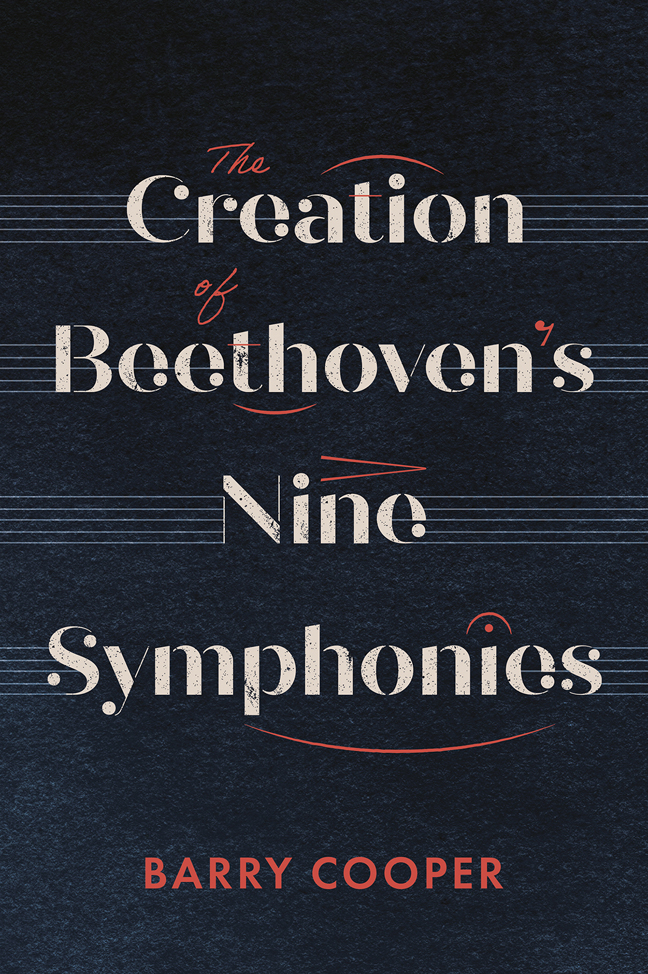Book contents
- Frontmatter
- Contents
- List of music examples
- List of tables and figures
- Preface and acknowledgements
- Abbreviations
- Introduction
- 1 The Long and Hazardous Road to the First Symphony, Op. 21
- 2 A Creation in Two Parts: The Second Symphony, Op. 36
- 3 Elevating the Genre: The Third Symphony (Eroica), Op. 55
- 4 The Oppersdorff Connection: The Fourth Symphony, Op. 60
- 5 Motivic Intensity: The Fifth Symphony, Op. 67
- 6 ‘More an Expression of Feeling than Painting’: The Sixth Symphony (Pastoral), Op. 68
- 7 ‘Great, Exalted’ Work: The Seventh Symphony, Op. 92
- 8 ‘Just Because it is Much Better’: The Eighth Symphony, Op. 93
- 9 The Philharmonic Connection: The Ninth Symphony, Op. 125
- 10 Epilogue
- Bibliography
- Index of Music Manuscripts
- Index of Beethoven’s Works
- General Index
2 - A Creation in Two Parts: The Second Symphony, Op. 36
Published online by Cambridge University Press: 02 March 2024
- Frontmatter
- Contents
- List of music examples
- List of tables and figures
- Preface and acknowledgements
- Abbreviations
- Introduction
- 1 The Long and Hazardous Road to the First Symphony, Op. 21
- 2 A Creation in Two Parts: The Second Symphony, Op. 36
- 3 Elevating the Genre: The Third Symphony (Eroica), Op. 55
- 4 The Oppersdorff Connection: The Fourth Symphony, Op. 60
- 5 Motivic Intensity: The Fifth Symphony, Op. 67
- 6 ‘More an Expression of Feeling than Painting’: The Sixth Symphony (Pastoral), Op. 68
- 7 ‘Great, Exalted’ Work: The Seventh Symphony, Op. 92
- 8 ‘Just Because it is Much Better’: The Eighth Symphony, Op. 93
- 9 The Philharmonic Connection: The Ninth Symphony, Op. 125
- 10 Epilogue
- Bibliography
- Index of Music Manuscripts
- Index of Beethoven’s Works
- General Index
Summary
Adagio – Allegro con brio
Larghetto
Scherzo: Allegro
Allegro molto
Preliminary work and first movement
Having achieved considerable success with his Akademie (benefit concert) of April 1800, which a reviewer described as ‘probably the most interesting Akademie for a long time’, it was natural that Beethoven should want to repeat his success with a new symphony the following spring, which was almost the only time when theatres in Vienna were available for such concerts. Accordingly he set to work on his Second Symphony towards the end of 1800. In contrast to his First Symphony, numerous sketches survive for the Second, and they have been discussed in considerable detail by Gustav Nottebohm, Kurt Westphal, Cecil Hill and Nicholas Marston, in addition to brief accounts elsewhere. These authors, however, do not provide the full biographical context, which must be obtained from other sources.
The first surviving sketches for the symphony appear in the sketchbook Landsberg 7. This book was begun around September 1800, though no very precise date is available and it could have been a month or two earlier or later. The first part of the book is devoted mainly to two violin sonatas, Opp. 23 and 24, which had apparently been commissioned by Count Moritz Fries, but Beethoven suddenly left off work on them, with Op. 24 far from finished, to work on the new symphony, starting on what is now page 38. Something, perhaps a proposal for a new Akademie the following spring, may therefore have prompted him to make this rapid change of direction. The earliest sketches seem far from tentative, for page 38 includes an extended continuity draft covering virtually the whole of an introduction and ensuing exposition, albeit in a somewhat compressed form of only about fifty-five bars altogether (the final version of this section occupies 133 bars). It must be suspected, therefore, that either some earlier sketches are lost, or that Beethoven worked on the movement at the piano and in his head for some time before writing anything down. Another possibility is that, just as he could improvise a piece fluently without preparation, the draft is a written-down improvisation, where what came into his head was written rather than played on the piano.
There are several striking features in this initial draft.
- Type
- Chapter
- Information
- The Creation of Beethoven's Nine Symphonies , pp. 35 - 60Publisher: Boydell & BrewerPrint publication year: 2024

